Forestry in India
Forests are the main basis of the
circumstances as well as the sources of human livelihood. Fuel for cooking,
fodder for Animal husbandry etc are obtained from forests. Presently, more than
3.5 lakh people are associated with forest related work and 2 percent of the
national income gets us from forests. Nearly 20% of Indian area is surrounded
by forest, which is equivalent to 65 million hectare area. India is included in
the list of 10 countries which is the most forested country. These lists
include China, Democratic Republic of the Congo, Australia,
Indonesia, Sudan, Brazil and Russia.
Three
types of natural vegetation- 1. Forest 2. Grass and 3. The most
important of the bushes is forest. Climate is regulated by the forest itself.
Due to the moisture content of the forest, the temperature decreases and
changes in climate cause rainfall. Due to the depletion of rainwater due to
rainwater, floods, landslides do not occur and it increases the
level of ground water. Not only this, forests help prevent cold winds, storm
etc. Dry leaves fallen from the trees rot in the ground and give fertilizer
work, which increases the fertility strength. Various types of vegetation,
herbs and rare organisms are found in forests. The greenery of the forest
increases natural beauty, which encourages tourism and national income
increases.
Due
to the tropical and cold climate in India, there is considerable inequality in rainfall
and temperature. In areas with rainfall of more than 200 centimeters, there are
evergreen broad-leaf forests, which include lakes, pellets and shrubs.
Deciduous monsoon forests are found in parts of 100 to 200 centimeters of
rainfall. In these forests, rosary, Saagwan (teak), Pine tree of the year is found, in
the arid parts of 50-100 cm rainfall, thorn tree species of acacia species are
found. And semi-desert forests are found in an area of less than 50
centimeters. In India's total forest areas, 93% of tropical forests and 87%
temperate forests are found. Out of this, 95.7 percent of forest land is in the
possession of state governments, 2.8 percent corporations and the remaining 1.5
percent of private institutions.
History of forest conservation in
India
Gibson
tried to enforce the rules for banning the forest's preservation and protection
of its agriculture. From 1865 to 1894 forest conservation was established for
the materials of imperial needs. Later, planning to produce forest by adopting
wild management system, people started to take interest in forest conservation,
after which the rulers of Indian state give protection to the people who help
in the protection of birds and mammals in the forest. Large scale plantation was done in Punjab and
Uttar Pradesh from 1926 to 1947. The construction work of most national parks in India was done. This benefit of conservation has caused many species to
survive extinction. read this INDUS VALLEY CIVILIZATION
After
this, the goal of keeping one-third of India's forests under the Forest Policy
of 1952 was made. Some activities which have been damaging forests have been banned;
this has seen changes in people's thinking and its development over forests in
the next 50 years. After that a creative attitude was adopted to preserve it
through a five-year plan.
In 1980, the Forest Conservation Act was passed, in this Act it was decided that from now on the central area will have to get central permission for agriculture or forestry and agriculture. If they do not do that, then they will be kept in the category of crime. The aim of this law is to limit the deforestation, conserve biodiversity and preserve wildlife, but this year due to low investment and ignorance there was no significant reduction in deforestation, after which in India, in 1988 Launched its National Forest Policy, which under the joint forest management policy program, proposed that a special forest block will be managed in the villages along with the forest department.
Security of forests and forests will be the responsibility of the people in particular. This kind of initiative was considered positive because as of 1992, seventeen states of India participated in joint forest management and about 20 lakh hectare forests were brought under protection.
In 1980, the Forest Conservation Act was passed, in this Act it was decided that from now on the central area will have to get central permission for agriculture or forestry and agriculture. If they do not do that, then they will be kept in the category of crime. The aim of this law is to limit the deforestation, conserve biodiversity and preserve wildlife, but this year due to low investment and ignorance there was no significant reduction in deforestation, after which in India, in 1988 Launched its National Forest Policy, which under the joint forest management policy program, proposed that a special forest block will be managed in the villages along with the forest department.
Security of forests and forests will be the responsibility of the people in particular. This kind of initiative was considered positive because as of 1992, seventeen states of India participated in joint forest management and about 20 lakh hectare forests were brought under protection.
From
1990 to 2000 FAO found in a study that India is the fifth largest beneficiary
in the field of forest coverage or covered area in the world, which is said to
be the third largest beneficiary in FAO study from 2000 to 2010. In this way it
managed its policy of preserving forest.
Types of Forests in India
Mangrove forest
These
forests are found in those parts of the country, where the average rainfall is
more than 200 cm and the annual average temperature is about 24 degree
centigrade. It has three major areas.
Western
shield of Western Ghats
Andaman
and Nicobar Islands
Bengal,
Assam, Meghalaya and Tarai Pradesh in North Eastern India.
In
this type of forest, mainly trees, mahogany, ebony, wild mango, palm, tree and
bamboo etc. and many types of vines are found. The height of these trees ranges
from 30 to 45 meters. The concentration of trees is so high that the sun's
light does not reach the ground
also know Russian revolution
Himalayan state or mountain forest
These
types of forests are found in the high topography of the Himalayan region.
According to different heights in this state, variation in species of forest is
also found. In high altitude areas, angular pointing leaf forests are found
which 17-18 meters high is. In the lower part, wide-leaf forests are found,
whose elevation is generally around 6 to 9 meters. Due to heavy rainfall in the
eastern parts of the Himalayas, Assam, Manipur and Pt. Bengal, dense forest is
found. These forests of the Himalayas can be divided into eight sub-divisions.
1 1. Tropical evergreen forest
These
forests are found in Assam, these forests are quite dense. Among these, the
main species are Jamuns, cane, step, Errol, rosewood, haldu, pagar, champa and
wild common man etc.
2 2. Tropical dry deciduous forests
These
forests are found in the foothills of the entire Himalayan region. Among these,
the main species are Sagwan, Rosewood, Amalat, Palash, Bamboo, Satanwood, Haldu
etc
3 3 . Wide-leaf forest
These
types of forest are found on the lower slopes of Pt. Bengal and Assam
Himalayas. Among these, species of Matilus, Malessema and Jamuna etc. are
found.
4 4 . Sub-tropics pine forest
In the western
Himalayas this forest is found in an average height of 1000 meters to 1800
meters. Forests of pine are found mostly in this type of forest. In addition,
species of jamun, oak, bunarash are also found.
5 5. Sub-tropical dry evergreen forest
In this type of
forest, small shrubs are found. These types of forest are found in the Shivalik
Mountain and in the western Himalayan region, in parts above 1000 meters. The
main species found in these forests are Well, Keekar, Acacia etc.
6 6. Mountain moderate humid climate
This type of
forest is found in the eastern Himalayan region in the high mountain part of
Bengal, including cinnamon, fenugreek, junior, pangar etc.
7 7. Himalaya moderately humid climate
This forest
with pointed leaves covers the entire Himalayan part of Kashmir, Himachal
Pradesh, and Uttar Pradesh. In the mountainous region of Bengal and in Sikkim,
between 1500 meters to 3,000 meters high - the important species in this are
-fish cedar, fur, sponge, cal, pangar, chilgoza etc are found.
8 8. Alpine forest
These alpine grasslands, popularly
known as 'Marg' in Kashmir and Bugyal in Uttarakhand, are found in the
Himalayan region at an altitude of more than 3,000 meters, in which various
types of shrubs, ferns, grasses, colorful flowers and fragrant herbs etc. are
found.
Deciduous Forests in India
Deciduous
forest can be divided into two forms, one moisture-rich and the other happy
deciduous forest. This type of forest is found in areas where 100 cm to 200
centimeters of annual rainfall occur. Such a forest can be found in most parts
of India. It is found in the east from Jammu to West to West Bengal till the
Shiwalik hills. In such forests, trees like teak, mango, bamboo, sandalwood and
kills are found. Except for the North Eastern regions, dry deciduous forests
are found in the northern and southern parts of India. There are many types of
animals such as insects, mammals, reptiles found in this forest. This type of
forest is found in Madhya Pradesh, Gujarat, Andhra Pradesh and Karnataka.
Autumn or monsoon forest
Such
forests are found in those parts where the average annual rainfall is from 100
cm to 200 cm. These forests are found in northern mountainous region, lower
part, Vidyanchal and Satpura mountains, Chota Nagpur and the hills of Assam,
the southern part of the Eastern Ghats and the eastern region of the Western
Ghats.
These
forests are more dense and the trees are neither taller nor taller. These are
major tree years, saagwan, neem, sandalwood, rosewood, amla, mulberry, ebony,
mango, rosewood, bamboo etc. Their wood is not very hard. These can be easily
cut. Shipments, furniture, etc. can be made from wood.
facts about SUN
Mangal tree forests in coastal areas:
These
forests are found on the river delta coast; such plants grow in the mixture of
brackish and fresh water; these forests are found in areas with moisture.
Desert Forest in India
These
forests are found in parts of less than 50 cm of rain. In the trees there, the
leaves are short, short and thorny. Acacia grows abundantly here. Hawthorne,
Rambans, Khayedi, Khair, Khajur etc. are the main vegetation here.
These
plants are found in southern western Punjab, western Rajasthan, Gujarat, Madhya
Pradesh etc. They only have local importance.
Tidal forest in India
They
are also called as Moorish forests, which are found in the forests of the
Mahanadi, Krishna, Godavari, Kaveri, Peninsular rivers, and the deltaai of
Ganga Brahmaputra. At the time of tidal breezing, the water of the oceanic
waters of the sea is irrigated.
In
such states there is mud and swamps, beautiful forests in these forests, Ganga
is found especially in the delta of Brahmaputra. Other trees are palm, coconut, Rhizophora etc. The wood of these trees is very soft.
Dry forest in India
These
forests are found in those areas, where the average of rainfall lasts from 50
to 100 cm. In these areas, there is abundance of water loss tolerant trees. The
roots of these trees are long and thick. This type of forest is found mainly in
southern western Punjab, Haryana, eastern Rajasthan and southern western Uttar
Pradesh. The main tree is Keekar, Acacia, Neem, Mango, Mahua, Kar, Khayjadi
etc. In the absence of rain, trees are less tall. The height of trees is 6 to 9
meters.

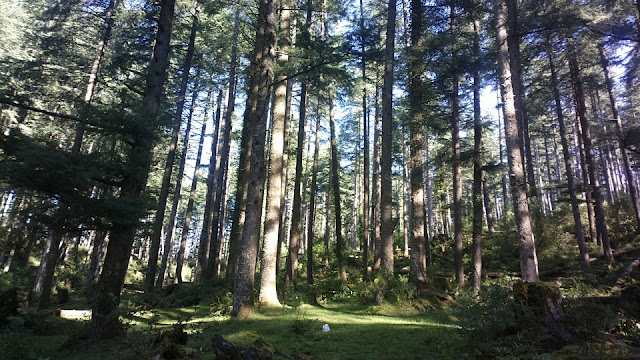
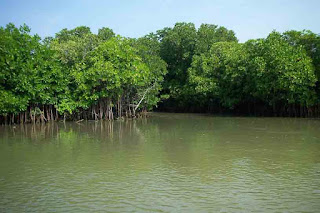
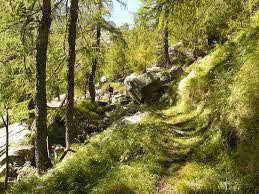
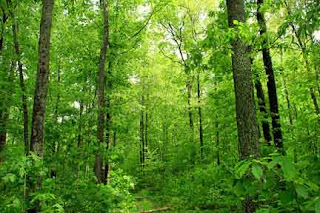
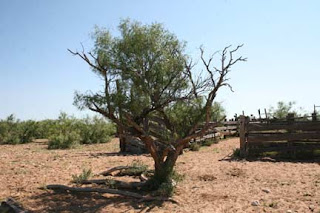
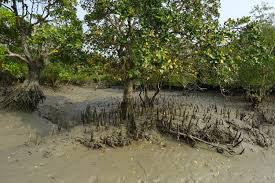

1 Comments:
Click here for Commentsif you want to backlink from my site pls cmt
ConversionConversion EmoticonEmoticon